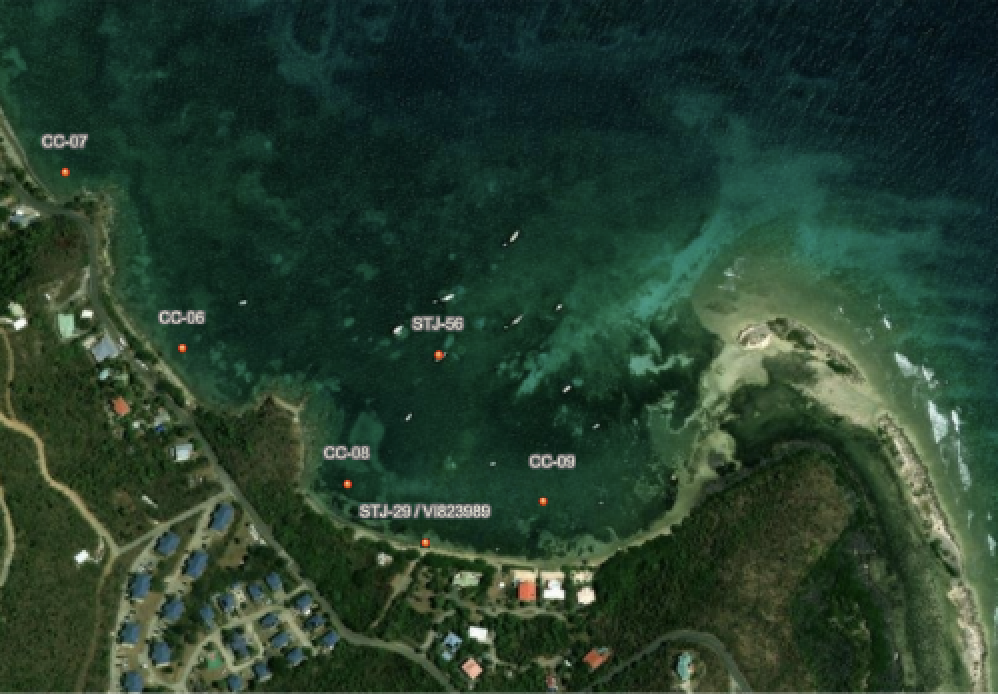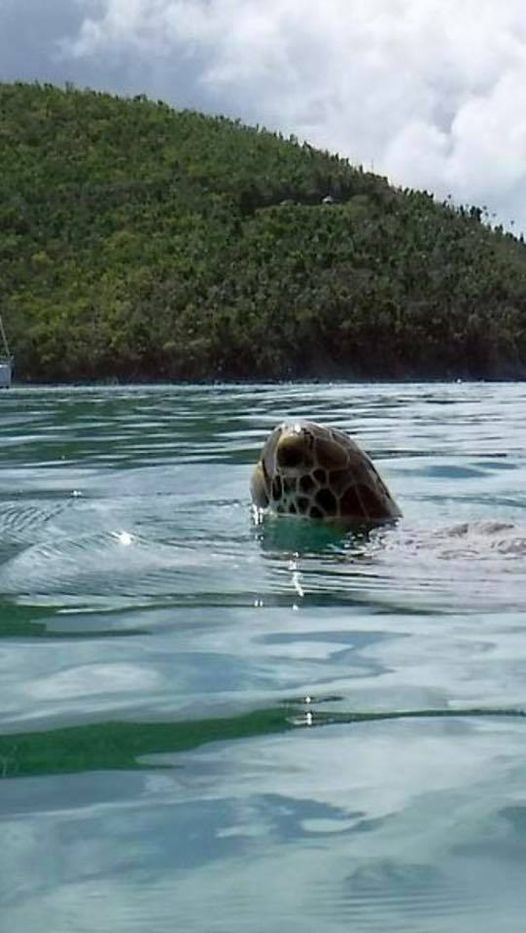The University of the Virgin Islands conducted water sampling tests for Coral Bay Community Council (CBCC) that show the Coral Bay Harbor meets USVI water standards for recreation and human contact, Coral Bay Community Council announced in a press release Monday.

CBCC hired UVI to test water samples taken from Coral Harbor and Johnson Bay in Coral Bay, St. John, on Oct. 31, 2022. Although UVI conducts this kind of testing in several places in Coral Bay quarterly for the Department of Planning and Natural Resources water quality monitoring program, residents at a July 2022 Coral Bay community meeting expressed concerns that the single test taken quarterly near the town dock might not be representative of all places people often wade into Coral Harbor or into Johnson Bay or nearby bays, according to the press release.
Everyone is concerned that E. Coli and other harmful bacteria and viruses should not be present in our nearshore ocean waters that we use for recreation. The government has detailed testing standards for coastal waters, and we all want to be sure that Coral Bay’s waters are safe for human contact – wading, swimming, boating, and fishing, the press release stated.
Thus, CBCC pledged to try to do more testing to help satisfy people’s concerns about the safety and quality of the ocean water and worked with the Environmental Analysis Laboratory at UVI to undertake special sampling at the same time the regular quarterly sampling was conducted. The report and data can be read on CBCC’s website, the release stated.
The good news is the ocean water tested safe!
Sampling was accomplished at 11 locations around Coral Harbor and Johnson Bay: near the Coral Bay Town Dock (normal quarterly sampling spot) and 100 feet from the shoreline in front of places known as Pickles, Flamingo Pond, Lime Out, Harolds Way, Island Blues, Shipwreck, Calabash Market, and three locations along Johnson Bay Beach. The test date was four days after a two-inch rainfall event and with only limited or no sargassum seaweed nearby (which can interfere with accurate test results), according to the release.
Testing the amount of Enterococci in seawater is the standard scientific measure used by government agencies to judge the presence or absence of harmful bacteria and viruses and, thus, the safety of water for human contact, it said.

The test results showed the levels of Enterococci were significantly below the maximum considered safe. The EPA and USVI standard is a finding of no more than 70 Enterococci colonies in 100 milliliters of water. All 11 samples showed 10 or less than 10 colonies, which is far below the maximum allowable of 70, the release stated.
Sharon Coldren, CBCC voluntary executive director, said, “The good news is that no scientific sampling in any location showed the water being unsafe for human contact (or even close to that in the measurement system), and I think that’s really important for people to see. Coral Harbor, despite being under continual development, has not started to have unsafe ocean water problems either from land, boats, or other sources. We need to continue to remain vigilant.”
Coral Harbor also met Virgin Islands standards for “Turbidity” in the testing, which is a measure of cloudiness of the water due to suspending particles, such as living plankton, mangrove leaves, sargassum, other vegetative debris, or suspended sediment (dirt). More scientific research is needed to understand what is in our waters and its overall health as a marine nursery ecosystem, it said.
The important takeaway of this testing is that the bay is safe for swimming and recreation, even in these more populated areas. CBCC plans another round of similar testing in November 2023, according to the release.
More about past water quality monitoring and the USVI standards can be found in the 2021 Coral Bay Watershed Management Plan Section 9 or on DPNR’s website at Water Quality Management Program – VI DPNR.
Coral Harbor and Johnson Bay met USVI water quality standards for human contact after water testing that sampled 11 locations, the release stated.


